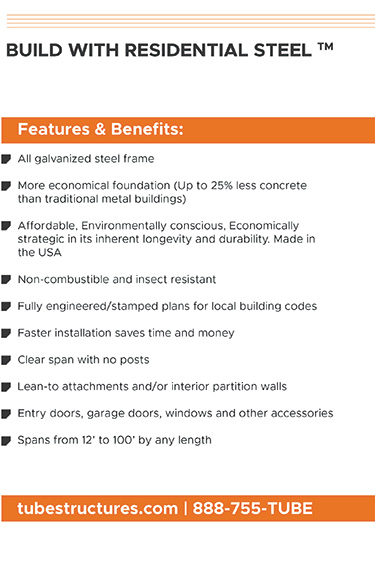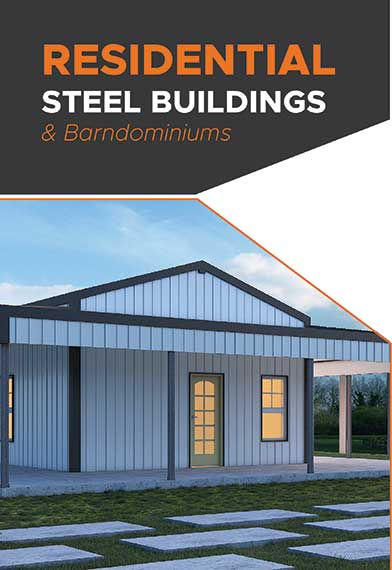In the world of steel construction, steel strength is measured by thickness, or steel gauge. As you shop for metal buildings, you’re likely to see a wide variety of steel gauge sizes advertised. Remember, steel gauge corresponds directly with thickness: The lower the guage, the thicker the metal (lower=thicker, higher= thinner).
Your metal gauge selection will be based upon multiple factors: building size, regional climate, roof pitch, warranty considerations, etc. However, ultimately, the strength and spacing of the internal framing will be the major determinant for what gauge of steel is needed. If you have closely spaced, strong internal frame, you could use a higher gauge (or thinner) metal. A stronger metal, thus a lower gauge, would be needed if internal framing is widely spaced. With a metal building Kit, this is usually factored into the Kit planning.
For a better quality structure – one in which long-term appearance and extreme weather resistance are critical – a lower gauge would be best.
The heavier gauge material will be stronger, more wind resistant, more resilient to foot traffic, and longer lasting. Strength is a factor to be considered if you’re looking for a metal building that will stand the test of time.
For a very basic strength comparison: some manufacturers advertise that a 26 gauge roof is sturdy enough to support a running adult. (SPECIAL PSA: PLEASE Do NOT try this at home! 🙂 Metal can also be extremely slippery! )


